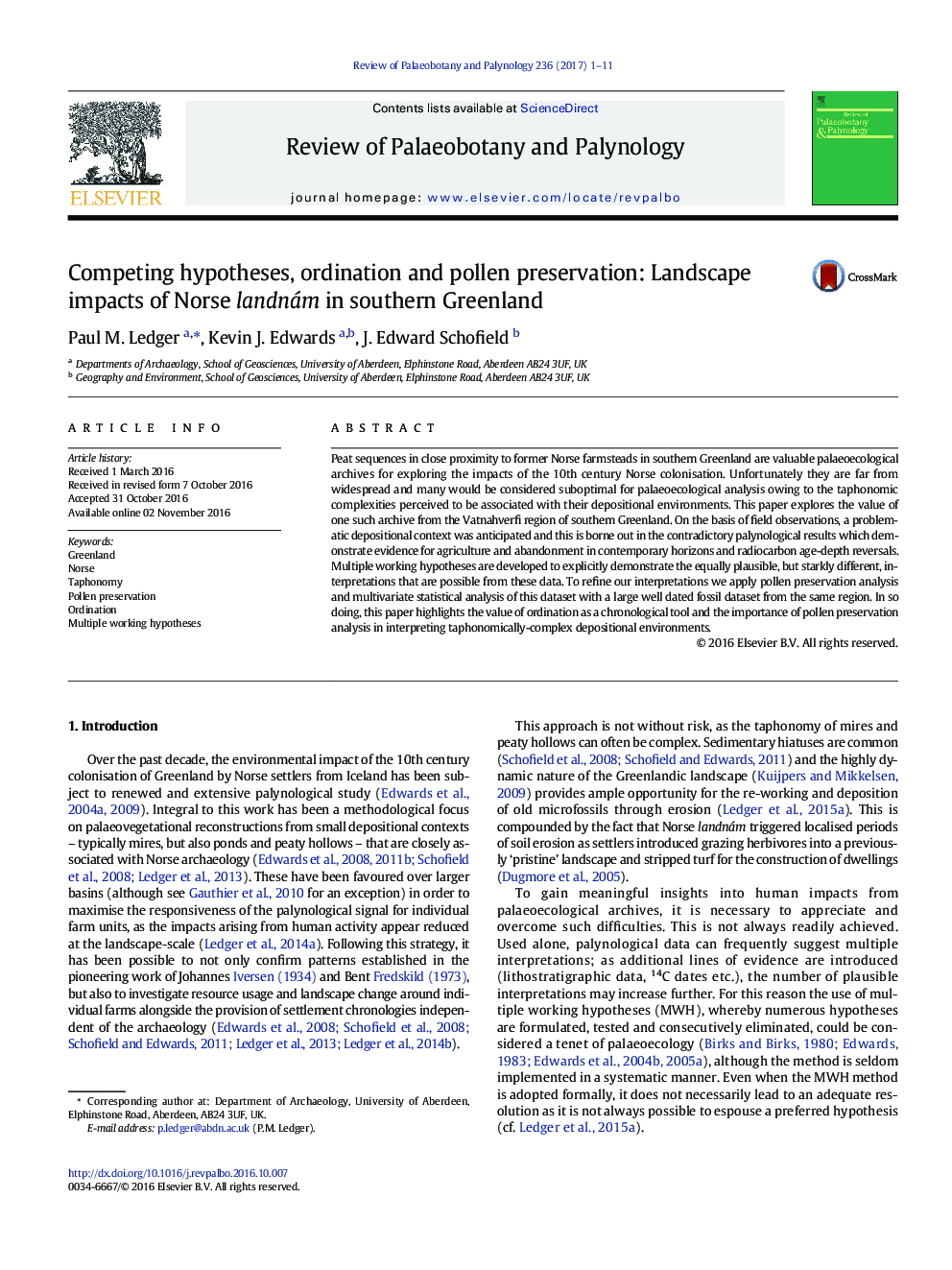| Article ID | Journal | Published Year | Pages | File Type |
|---|---|---|---|---|
| 4750016 | Review of Palaeobotany and Palynology | 2017 | 11 Pages |
•A taphonomically complicated Norse age peat sequence from southern Greenland is analysed.•Multiple working hypotheses are developed from contradictory data pertaining to human impact.•Underutilised analyses (ordination and pollen preservation) are used to aid interpretations.•Ordination of large well contextualized fossil pollen datasets is a valuable chronological tool.•Pollen preservation data is invaluable in interpreting human impacts from taphonomically complex situations.
Peat sequences in close proximity to former Norse farmsteads in southern Greenland are valuable palaeoecological archives for exploring the impacts of the 10th century Norse colonisation. Unfortunately they are far from widespread and many would be considered suboptimal for palaeoecological analysis owing to the taphonomic complexities perceived to be associated with their depositional environments. This paper explores the value of one such archive from the Vatnahverfi region of southern Greenland. On the basis of field observations, a problematic depositional context was anticipated and this is borne out in the contradictory palynological results which demonstrate evidence for agriculture and abandonment in contemporary horizons and radiocarbon age-depth reversals. Multiple working hypotheses are developed to explicitly demonstrate the equally plausible, but starkly different, interpretations that are possible from these data. To refine our interpretations we apply pollen preservation analysis and multivariate statistical analysis of this dataset with a large well dated fossil dataset from the same region. In so doing, this paper highlights the value of ordination as a chronological tool and the importance of pollen preservation analysis in interpreting taphonomically-complex depositional environments.
